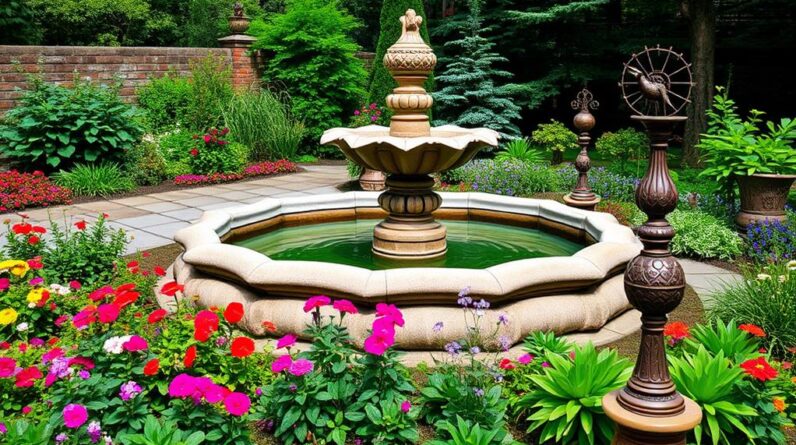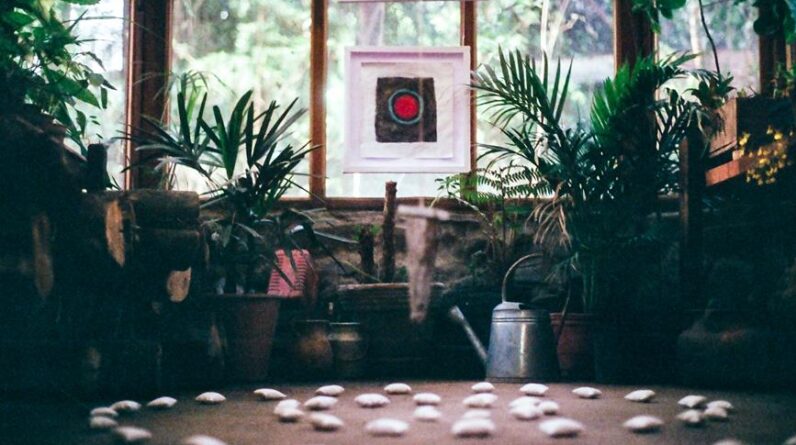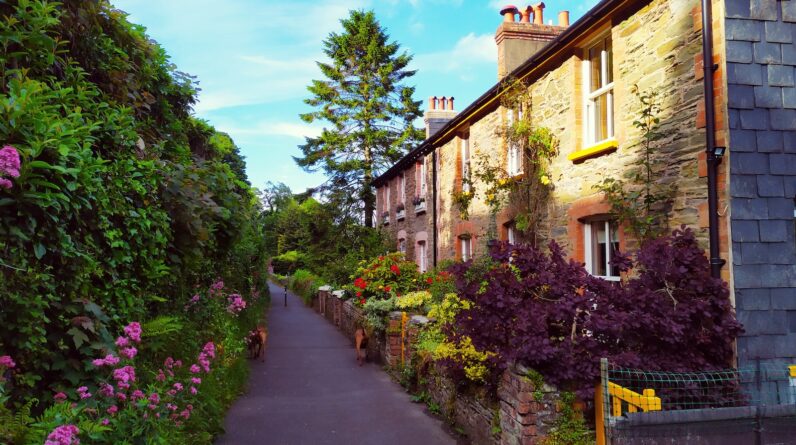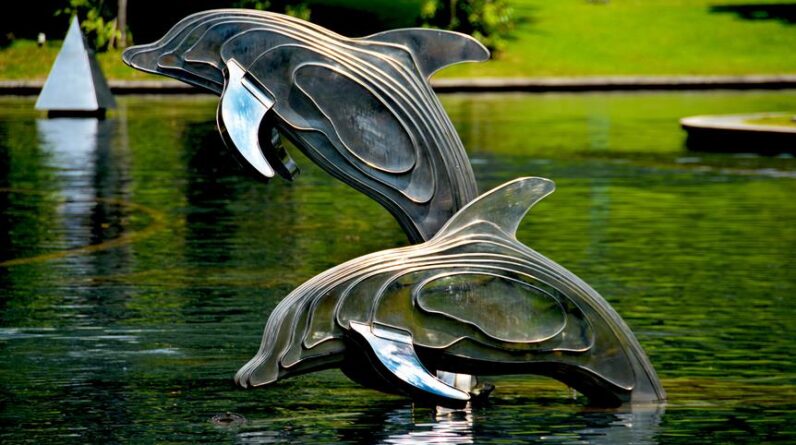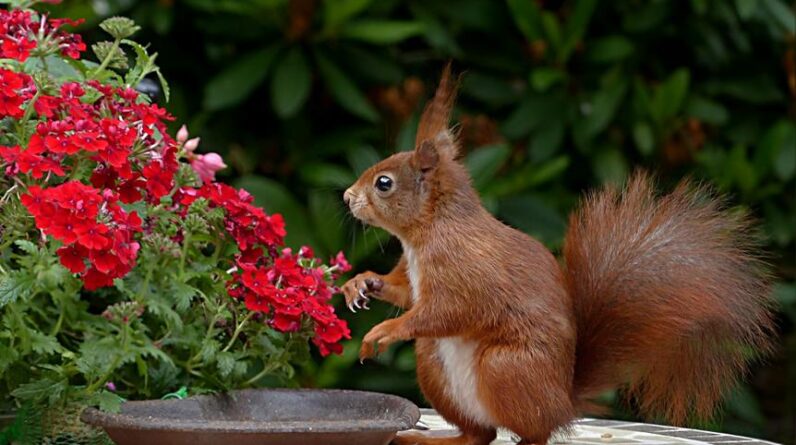
Are you tired of spending hours maintaining a garden that only attracts pesky pests?
It's time to revolutionize your outdoor space by creating a wildlife-friendly garden. By embracing the beauty of native plants, incorporating water features, and building structures that provide refuge, you can transform your garden into a haven for birds, butterflies, and other fascinating creatures.
Say goodbye to traditional gardening and hello to a world of innovation and harmony with nature. Get ready to design a garden that will truly inspire!
Key Takeaways
- Native plants are essential in wildlife gardens as they require less maintenance and support pollinators.
- Incorporating water features like ponds and bird baths provides habitat for various wildlife species.
- Building wildlife-friendly structures such as birdhouses and bee hotels enhances the garden's charm and provides nesting sites.
- Choosing fruit-bearing trees and shrubs and implementing sustainable pest control methods contribute to a thriving wildlife habitat in the garden.
The Importance of Native Plants in Wildlife Gardens
You should prioritize using native plants in your wildlife garden. Not only do they provide a beautiful and natural aesthetic, but they also offer a multitude of benefits for both the environment and the wildlife that inhabits your garden.
Native plants are specifically adapted to the local climate and soil conditions, making them more resilient and requiring less maintenance. They also play a crucial role in supporting pollinators, such as bees and butterflies, by providing nectar and pollen-rich flowers.
Additionally, incorporating native grasses in your wildlife garden can provide essential habitat for small mammals, birds, and insects. These grasses offer cover, nesting materials, and a food source for many wildlife species.
By prioritizing native plants, you're creating a thriving ecosystem that supports biodiversity and enhances the overall health of your garden.
Now, let's explore another important aspect of designing a wildlife-friendly garden: creating water features to attract wildlife.
Creating Water Features to Attract Wildlife
To attract wildlife, consider incorporating water features such as ponds or bird baths in your garden. Water is an essential element for many species, providing them with a place to drink, bathe, and even reproduce. By incorporating water features, you can create a haven for a variety of wildlife in your garden.
Bird baths are a simple and effective way to attract birds to your garden. These shallow pools of water provide birds with a place to drink and cool off, especially during hot summer days. To make your bird bath even more appealing, consider adding a small fountain or dripper to create movement and attract birds from afar.
Ponds, on the other hand, can provide a habitat for a wide range of wildlife, including frogs, dragonflies, and even fish. When designing your pond, be sure to include shallow areas for animals to access the water easily. You can also incorporate aquatic plants, such as water lilies, to provide shelter and food for wildlife.
In addition to water features, consider incorporating bird feeders and installing butterfly houses in your garden. These structures provide additional resources for wildlife, attracting a diverse range of species and enhancing the overall biodiversity of your garden.
With these innovative additions, your garden will become a thriving oasis for wildlife to enjoy.
Building Wildlife-friendly Structures in Your Garden
Constructing a birdhouse in your garden can provide a safe and cozy nesting spot for a variety of bird species. Not only will it attract birds, but it will also add charm and beauty to your outdoor space.
Here are three ways you can incorporate birdhouses and nest boxes in your garden:
- Place multiple birdhouses at different heights and orientations to accommodate various bird species. This will attract a diverse range of birds and create a lively atmosphere.
- Consider constructing a bee hotel for native pollinators. This structure provides nesting sites for solitary bees, which are excellent pollinators for your garden. Fill it with bamboo tubes or drilled wooden blocks to create cozy homes for these vital insects.
- Incorporate nest boxes for species such as bluebirds, wrens, and chickadees. These small boxes can be mounted on trees or poles and will provide a safe haven for these beautiful songbirds.
Choosing the Right Trees and Shrubs for Wildlife Habitat
When creating a wildlife-friendly garden, it's important to consider the types of trees and shrubs that will provide a suitable habitat for various wildlife species. One way to attract wildlife is by selecting fruit-bearing plants. These plants not only provide a source of food for birds and small mammals but also add beauty to your garden.
Some examples of fruit-bearing trees and shrubs include apple trees, blueberry bushes, and raspberry canes.
Additionally, incorporating nesting boxes in your garden can provide shelter and breeding sites for birds and small mammals. These boxes should be strategically placed in areas with cover and protection, such as near trees or shrubs.
Implementing Sustainable Pest Control Methods in Wildlife Gardens
Use natural predators to control pests in your wildlife garden. By incorporating these organic solutions, you can create a balanced and sustainable ecosystem that benefits both your garden and the wildlife that calls it home.
Here are three effective methods for implementing sustainable pest control in your wildlife garden:
- Attract beneficial insects: Plant flowers such as marigolds, daisies, and lavender to attract natural predators like ladybugs, lacewings, and hoverflies. These insects feed on pests such as aphids, mealybugs, and spider mites, keeping their populations in check.
- Install birdhouses: Encourage birds like bluebirds, wrens, and chickadees to make your garden their home. These feathered friends love to feast on insects, including caterpillars, beetles, and grasshoppers, providing natural pest control.
- Build bat boxes: Bats are voracious eaters of mosquitoes, moths, and beetles. By providing them with shelter in bat boxes, you can enjoy their pest control services while helping these important pollinators thrive.
Implementing these natural predators and organic solutions will help maintain a healthy and pest-free wildlife garden, promoting biodiversity and sustainability.
Frequently Asked Questions
How Can I Attract Butterflies and Bees to My Wildlife-Friendly Garden?
To attract butterflies and bees to your wildlife-friendly garden, focus on creating a diverse and colorful landscape. Plant nectar-rich flowers like lavender, coneflowers, and milkweed. Provide water sources and shelter, such as butterfly houses and bee hotels.
What Are Some Common Mistakes to Avoid When Designing a Wildlife-Friendly Garden?
When designing a wildlife-friendly garden, it is important to know the common mistakes to avoid. By steering clear of these errors, you can maximize the benefits of a wildlife-friendly garden and create an innovative space for nature to thrive.
Are There Any Specific Plants That Are Particularly Attractive to Birds?
To attract birds to your wildlife-friendly garden, planting specific native species is key. These plants provide food and shelter, attracting a variety of bird species and enhancing the biodiversity of your garden.
How Can I Create a Balance Between Providing Food and Shelter for Wildlife Without Sacrificing the Aesthetics of My Garden?
You can create a balance between providing food and shelter for wildlife without sacrificing the aesthetics of your garden by incorporating water features and providing nesting spaces. This will help in creating wildlife habitats while maintaining the beauty of your garden.
Are There Any Specific Considerations I Should Keep in Mind When Choosing Trees and Shrubs for My Wildlife Garden?
When choosing trees and shrubs for your wildlife garden, it's important to consider native species and plant diversity. By selecting plants that are indigenous to your area, you'll provide essential resources and create a thriving ecosystem.
Conclusion
So there you have it, your very own wildlife-friendly garden. By incorporating native plants, water features, structures, and trees, you have created a haven for wildlife to thrive.
Remember, sustainable pest control methods are crucial in maintaining the balance of your garden ecosystem.
Now sit back and enjoy the beauty and wonder of nature as it flourishes right in your own backyard. Your garden will be a symphony of life, a sanctuary for creatures big and small.

